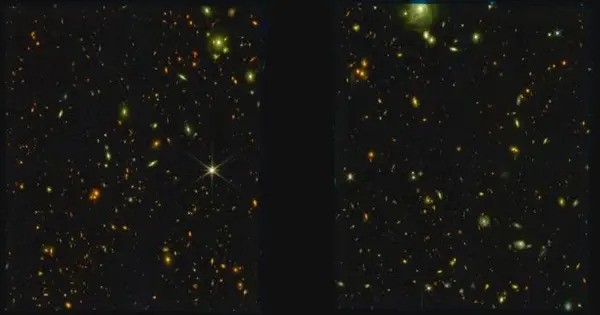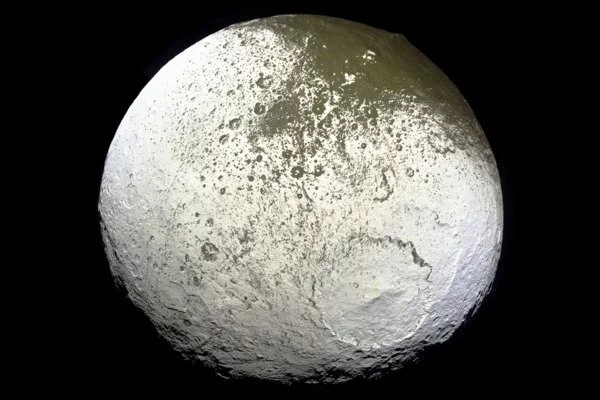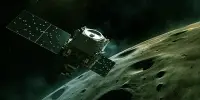Almost 14 billion years ago, at the very beginning of the Big Bang, a mysterious energy drove an exponential expansion of the infant universe and produced all known matter, according to the prevailing inflationary universe theory.
That ancient energy shared key features of the current universe’s dark energy, which is the largest mystery of our time by at least one objective standard: It makes up the majority — roughly 70% — of the universe, but scientists don’t know exactly what it is.
“If you ask yourself the question, ‘Where in the later universe do we see gravity as strong as it was at the beginning of the universe?’ the answer is at the center of black holes,” said Gregory Tarlé, professor of physics at the University of Michigan and co-author of the study. “It’s possible that what happened during inflation runs in reverse, the matter of a massive star becomes dark energy again during gravitational collapse — like a little Big Bang played in reverse.”
In a new study published in the Journal of Cosmology and Astroparticle Physics, Tarlé and colleagues from five institutions are strengthening the case for this scenario with recent data from the Dark Energy Spectroscopic Instrument. DESI is made up of 5,000 robotic eyes mounted on the Mayall telescope at the Kitt Peak National Observatory on the land of the Tohono O’odham Nation.
“If black holes contain dark energy, they can couple to and grow with the expanding universe, causing its growth to accelerate” said Kevin Croker, lead author of the team’s new study and an assistant research scientist at Arizona State University. “We can’t get the details of how this is happening, but we can see evidence that it is happening.”
If black holes contain dark energy, they can couple to and grow with the expanding universe, causing its growth to accelerate. We can’t get the details of how this is happening, but we can see evidence that it is happening.
Kevin Croker
Data from the first year of DESI’s planned five-year survey shows tantalizing evidence that the density of dark energy increased in time. This provides a compelling clue supporting this idea of what dark energy is, the researchers said, because that increase in time agrees with how the amount and mass of black holes increased in time.
“When I first got involved with the project, I was very skeptical,” said co-author Steve Ahlen, professor emeritus of physics at Boston University. “But I maintained an open mind throughout the entire process and when we started doing the cosmology calculations, I said, ‘Well, this is a really nice mechanism for making dark energy.'”
The difference a DESI makes
To search for evidence of dark energy from black holes, the team used tens of millions of distant galaxies measured by DESI. The instrument peers billions of years into the past and collects data that can be used to determine how fast the universe is expanding with exquisite precision. In turn, these data can be used to infer how the amount of dark energy is changing in time.
The team compared these data to how many black holes were being made in the deaths of large stars across the history of the universe.
“The two phenomena were consistent with each other — as new black holes were made in the deaths of massive stars, the amount of dark energy in the universe increased in the right way,” said Duncan Farrah, associate professor of physics at the University of Hawai’i and co-author of the study. “This makes it more plausible that black holes are the source of dark energy.”
This research complements a growing body of literature studying the possibility of cosmological coupling in black holes. A 2023 study, involving many of the authors on this paper, reported cosmological coupling in supermassive black holes within galactic centers. That 2023 report encouraged other teams to search for the effect in black holes across all the different places they can be found in the universe.
“Those papers investigate the link between dark energy to black holes by their rate of growth. Our new paper links black holes to dark energy by when they are born,” said Brian Cartwright, an astrophysicist, co-author and former general counsel of the U.S. Securities and Exchange Commission.
A key difference in the new paper is that the majority of the relevant black holes are younger than those previously examined. These black holes were born in an epoch when star formation — which tracks black hole formation — was well underway, rather than just beginning.
“This occurs much later in the universe and is informed by recent measurements of black hole production and growth as observed with the Hubble and Webb space telescopes,” said co-author Rogier Windhorst, an interdisciplinary scientist for the JWST and professor of earth and space exploration at Arizona State University.
“The next question is where these black holes are, and how they have been moving around for the past 8 billion years. Scientists are working to constrain this right now,” Croker said.
Science demands more avenues of inquiry and observations, and now that DESI is online, this exploration for dark energy is just getting started.
“This will only bring more depth and clarity to our understanding of dark energy, whether that continues to support the black hole hypothesis or not,” Ahlen said. “I think as an experimental endeavor, it’s wonderful. You can have preconceived notions or not, but we’re driven by data and observations.”
Regardless of what those future observations bring, the work happening now represents a sea change in dark energy research, the team said.
“Fundamentally, whether black holes are dark energy, coupled to the universe they inhabit, has ceased to be just a theoretical question,” Tarlé said. “This is an experimental question now.”
















